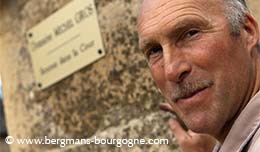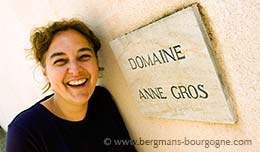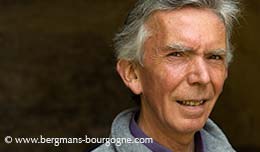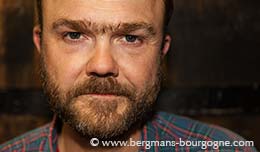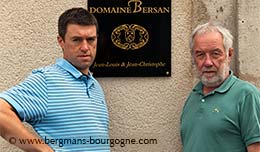
ivry may be right in the middle of the Côte Chalonnaise, but from a wine-making point of view it can occasionally become a bit isolated. The neighbouring appellations are a bit far away, so the growers in the village tend to stick their own appellation. Nicolas Ragot at Domaine Ragot is no exception. He makes Givry, Givry and more Givry.
– It’s simply not practical going outside the village, he says. Mercurey is eight kilometres from here. Montagny is twelve.
Givry is a predominantly red appellation. Both pinot noir and chardonnay may be used, but red wine accounts for about 85 per cent. Nicolas Ragot has it all covered. He makes both red and white, both village appellation and premier cru. Both the Bourgogne Aligoté and the Crémant de Bourgogne of the domaine are gone.
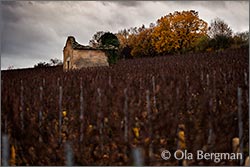 The history of the domaine goes a long way back. All the way to 1760, when Gabriel Ragot was a winegrower in Chamirey, a hamlet near Mercurey. A century later the family moved to Givry. Today Nicolas Ragot is the fourth generation running the domaine in Givry.
The history of the domaine goes a long way back. All the way to 1760, when Gabriel Ragot was a winegrower in Chamirey, a hamlet near Mercurey. A century later the family moved to Givry. Today Nicolas Ragot is the fourth generation running the domaine in Givry.
– For me it was an easy choice becoming a winegrower, says Niclas Ragot. Already as a kid it was something that appealed to me – working the soil, cultivating the vines, produce wine and putting it on the market. There are very few farm products which are grown, refined and marketed by the same person. There are a few bakeries in France that produce their own flour, but they are very rare.
 Nicolas Ragot has been vinifying at the family nine-hectare domaine for the past 15 years. Many changes have been made along the way. Most recently Domaine Ragot was accepted for the HVE level 3, the certification created by the French Ministry of Agriculture in 2011. HVE stands for Haute Valeur Environnementale and it does not only take into account what is done in the vineyards, but also all other environmental aspects of the domaine.
Nicolas Ragot has been vinifying at the family nine-hectare domaine for the past 15 years. Many changes have been made along the way. Most recently Domaine Ragot was accepted for the HVE level 3, the certification created by the French Ministry of Agriculture in 2011. HVE stands for Haute Valeur Environnementale and it does not only take into account what is done in the vineyards, but also all other environmental aspects of the domaine.
– I have changed a lot, says Nicolas Ragot. Especially when it comes to the vinification of the reds. Not so much the whites. The most important change is that the maceration is longer now.
 – The barrel cellar was constructed in 2002. Before we used to have 40 barrels. Today we have 140. So there is a change as well. I work with five different coopers and how the barrels are used is more consistent today. I’m looking for well integrated wood in the wine. I don’t want marked wood taste to my wines. I use barrels with a long, light toast.
– The barrel cellar was constructed in 2002. Before we used to have 40 barrels. Today we have 140. So there is a change as well. I work with five different coopers and how the barrels are used is more consistent today. I’m looking for well integrated wood in the wine. I don’t want marked wood taste to my wines. I use barrels with a long, light toast.
Historically the Domaine Ragot vineyards have been centered around Poncey, a hamlet right next to Givry where the winery is located. This is where you'll find Champ Pourot, a village appellation lieu-dit where Nicolas has a parcel planted with chardonnay.
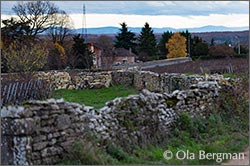 – It’s clay terroir, he says. It’s a light slope, facing north-northeast. Champ Pourot has the kind of soil which is better suited for chardonnay. But I have pinot noir in Virgaudine, a lieu-dit bordering on Champ Pourot.
– It’s clay terroir, he says. It’s a light slope, facing north-northeast. Champ Pourot has the kind of soil which is better suited for chardonnay. But I have pinot noir in Virgaudine, a lieu-dit bordering on Champ Pourot.
Nicolas Ragot has actively been trying to break up the concentration of vineyards around the winery. In 2001 there was severe hail in this part of Givry and since most of the vineyards were in the same place the domaine was hit badly financially.
Teppe des Chenèves is an example of the diversification of the vineyard portfolio. This lieu-dit is at the northern end of the appellation, above Clos du Cellier aux Moines and west of Cellier aux Moines. It is village appellation and Nicolas Ragot makes both red and white here.
 – Cellier aux Moines is facing south. Then the slope turns, so Teppe des Chenèves is facing straight east. Both are on the same altitude. It’s steep and Teppe des Chenèves is even steeper than Cellier aux Moines. There is a fault line in Teppe des Chenèves, splitting it into two distinctly different parts, one with whiter soil and one with more brown soil. There is also a difference in depth of soil. In the upper part it is seven metres. In the lower part it is just 50 centimetres.
– Cellier aux Moines is facing south. Then the slope turns, so Teppe des Chenèves is facing straight east. Both are on the same altitude. It’s steep and Teppe des Chenèves is even steeper than Cellier aux Moines. There is a fault line in Teppe des Chenèves, splitting it into two distinctly different parts, one with whiter soil and one with more brown soil. There is also a difference in depth of soil. In the upper part it is seven metres. In the lower part it is just 50 centimetres.
Nicolas Ragot isn’t a great fan of oaky wines. Still, much of his wine is made in wood, whether it is barrels or large tanks containing 3000 litres.
While 400-litre barrels are used for both Crausot and Teppe des Chenèves, 3000-litre wooden vats are used for Champ Pourot.
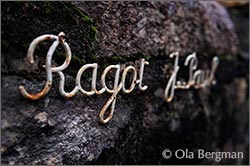 – My white Givry premier cru, Crausot, is a vineyard facing south-southeast. It’s right next to La Grande Berge. It was planted in 2002 and the soil is white, quite similar to Teppe des Chenèves.
– My white Givry premier cru, Crausot, is a vineyard facing south-southeast. It’s right next to La Grande Berge. It was planted in 2002 and the soil is white, quite similar to Teppe des Chenèves.
– Teppe des Chenèves is just village appellation. The INAO thought it lacked in history in order to be classified as premier cru. I’m not trying to have it upgraded. But the place is well-exposed and it produces some good stuff.
In the already mentioned premier cru of La Grande Berge Nicolas Ragot has five parcels of pinot noir. The oldest of the parcels was planted 40 years ago. The most recent in 1997.
– The élevage for La Grande Berge is the same as for the red Teppe des Chenèves. One third new oak. La Grande Berge always needs a bit more time to open up. It has more of a marked acidity, more of a cherry character.
The other red premier cru of Domaine Ragot is Clos Jus. La Grande Berge is just above the winery. Clos Jus is at the other end of the appellation.
– Clos Jus is north of Givry, says Nicolas Ragot. It’s outside the village. It’s in the commune of Dracy-le-Fort, towards Beaune. I have the last parcel there. What makes it special is the soil. It is much redder than the others thanks to the iron oxide.
The Givry old vines cuvée is a blend from various parcels around Champ Pourot.
– The soil in these parcels contain more clay, says Nicolas Ragot. The first time I made the vieilles vignes cuvée, in 2005, there were parcels older than 60 years. But those old vines were planted at a time when quantity was more important than quality. Big volumes of wine were needed to supply the miners in Montceau-les-Mines. Since then I have had those parcels replanted. The average age is now 35-40 years and the quality is better.
© 2019 Ola Bergman










